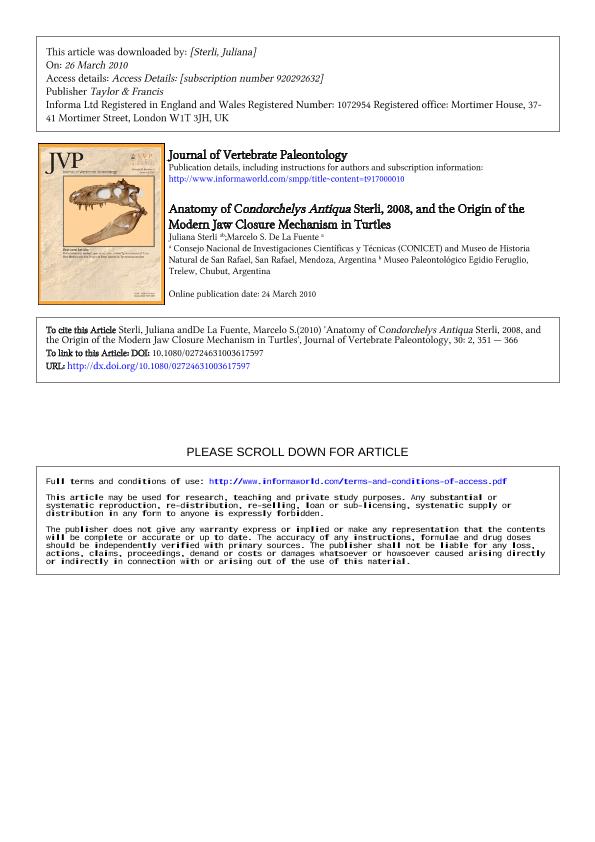Artículo
Anatomy of condorchelys antiqua sterli, 2008, and the origin of the modern jaw closure mechanism in turtles
Fecha de publicación:
03/2010
Editorial:
Society of Vertebrate Paleontology
Revista:
Journal of Vertebrate Paleontology
ISSN:
0272-4634
Idioma:
Inglés
Tipo de recurso:
Artículo publicado
Clasificación temática:
Resumen
Here we present a detailed anatomical description of cranial and post-cranial remains of a Jurassic turtle, Condorchelys antiqua Sterli, 2008, from the Caadn Asfalto Formation (Middle Jurassic) in central Patagonia. Although C. antiqua is similar in morphology to the Early Jurassic turtles Kayentachelys aprix and Indochelys spatulata, it differs in that it lacks both pterygoid teeth and a V-shaped suprapygal 2, respectively. In light of new discoveries and reinterpretations of other fossil taxa, we suggest that several changes in the evolution of the skull morphology of turtles (such as the closure of the basipterygoid articulation, the closure of the interpterygoid vacuity, the development of the secondary lateral wall in the braincase, the development of temporal emargination and/or the posterior extension of the crista supraoccipitalis) could be related to the acquisition of a stronger skull to accommodate the modern pulley system. The optimization of these characters in a phylogenetic framework shows that they are coincident with the appearance of trochlear systems (oticum or pterygoidei) in turtles, suggesting a functionally correlated relationship among them.
Palabras clave:
ANATOMY
,
TESTUDINATA
,
CONDORCHELYS ANTIQUA
,
MIDDLE JURASSIC
Archivos asociados
Licencia
Identificadores
Colecciones
Articulos(SEDE CENTRAL)
Articulos de SEDE CENTRAL
Articulos de SEDE CENTRAL
Citación
Sterli, Juliana; de la Fuente, Marcelo Saul; Anatomy of condorchelys antiqua sterli, 2008, and the origin of the modern jaw closure mechanism in turtles; Society of Vertebrate Paleontology; Journal of Vertebrate Paleontology; 30; 2; 3-2010; 351-366
Compartir
Altmétricas




